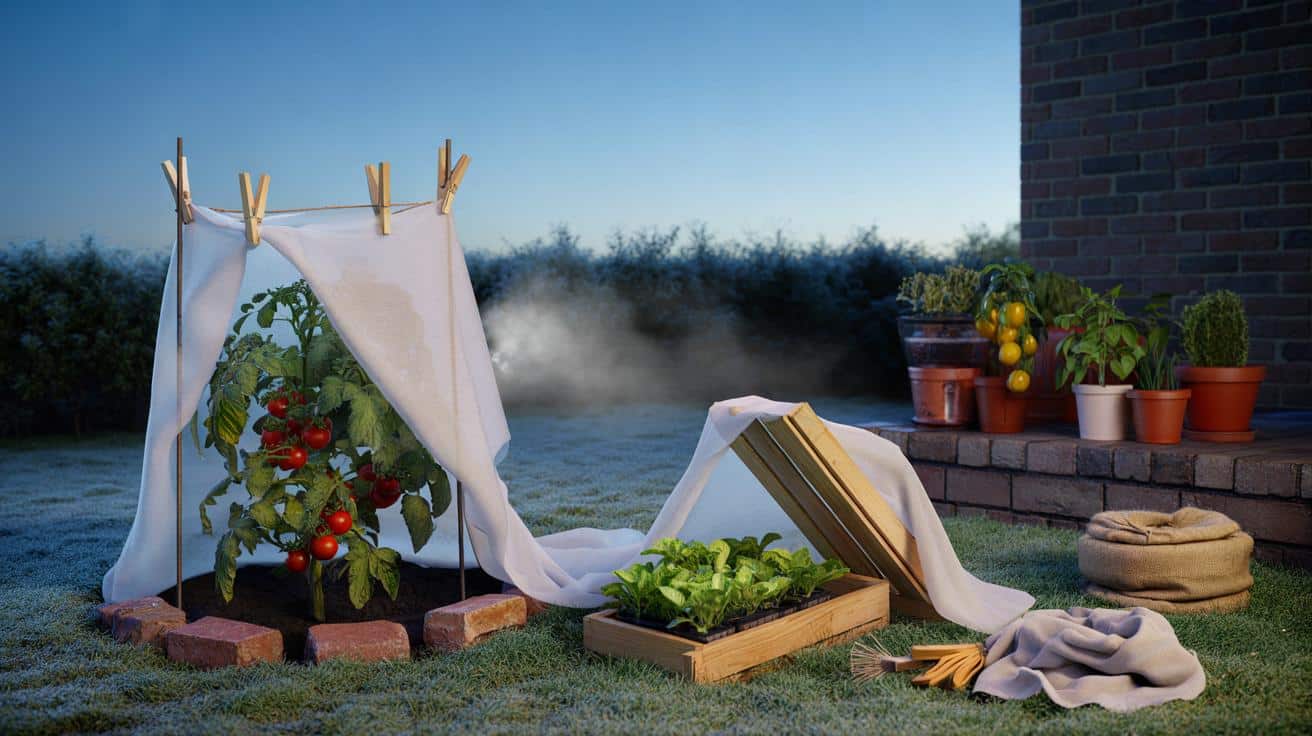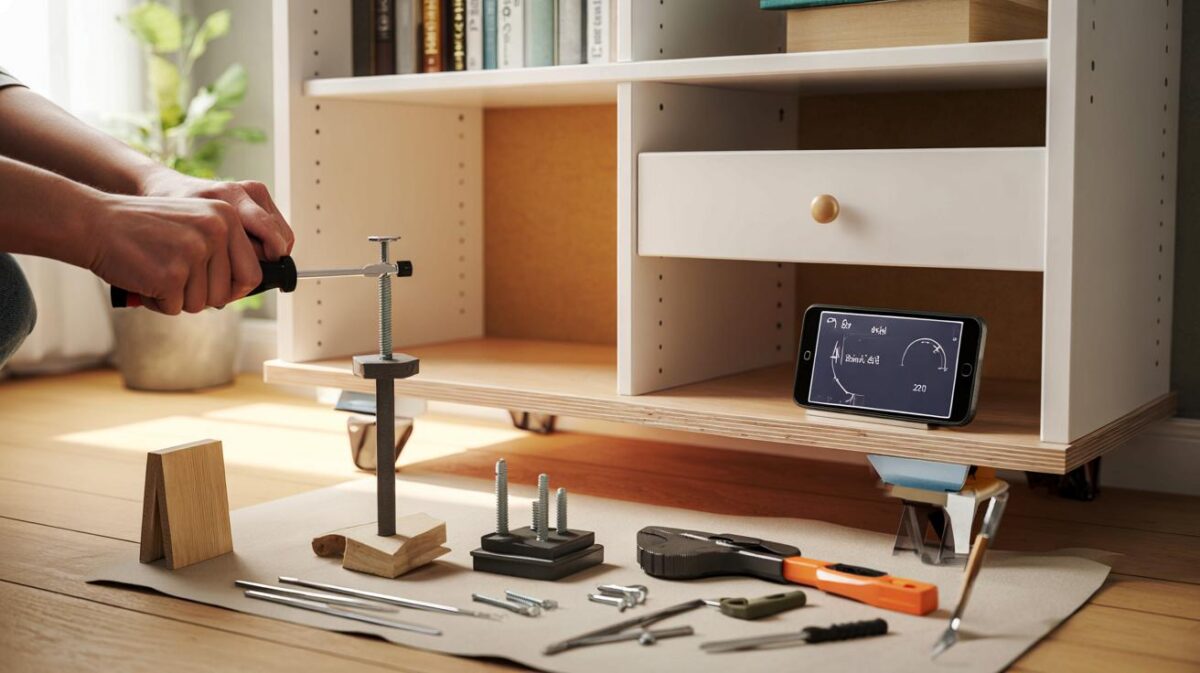Gardeners now face a quiet race against time and temperature.
Forecast models flag ground frost across low-lying plots as clear nights return earlier than many expected this October 2025. One cold snap can scorch tender leaves, bruise fruit and stall growth. With a quick plan and simple kit, you can shield crops and shrubs before the mercury slips.
Why acting before the first frost changes everything
A single night near freezing can rupture plant cells. Leaves blacken. Tissues turn watery. Fruit pits and scars. Roots suffer if cold locks moisture in the topsoil. Late tomatoes, young strawberries and soft herbs react first. Mediterranean pots, from citrus to oleander, drop leaves fast under radiative cooling.
Do not read the forecast air temperature alone. Ground level runs colder under a clear, still sky. A predicted 3°C at 1.5 metres can translate to -2°C at the soil surface by dawn, especially over short grass.
Rule of thumb: when the forecast reads 3°C with clear skies and light winds, prepare for a ground frost before sunset.
The unseen damage of a single cold night
Cells burst as ice forms, so foliage looks limp and wet by morning. Cucurbits scar on the skin and rot later. Lettuces collapse into a slimy mat. Soft tips on peppers and aubergines turn brown within hours. Recovery slows for weeks, and harvest windows close.
Reading the frost signals
Watch for cloudless evenings, calm air and dry, bright afternoons. These cues set up sharp overnight cooling. Valleys and hollows trap cold air and frost first. Raised beds cool less than flat turf.
Who needs the fastest help
- Tomatoes, peppers and aubergines nearing final pick
- Courgettes, pumpkins and cucumbers still swelling fruit
- Newly planted strawberries and soft fruit whips
- Tender herbs such as basil, coriander and lemon verbena
- Container olives, citrus and oleander away from shelter
Protect the tender, the recently planted and anything in containers; the cold reaches pots first and hardest.
Grab-and-go kit: what actually works in an emergency
Speed matters. Keep simple, breathable covers to hand. You do not need a shopping trip when the afternoon forecast dips.
The fastest fix: horticultural fleece
Light fleece traps a buffer of warmer air while letting moisture and light pass. You can drape it over beds, wrap it around small trees or clip it to sticks. It weighs little, stores flat and stays useful for several seasons if you dry it before folding.
Good stand-ins when you are short on time
- Cotton sheets or old duvet covers for a quick overnight shield
- Newspaper layers under a loose fleece to add a few degrees
- Upturned wooden crates to keep fabric off foliage
- Clean, wide cardboard panels over low salads and seedlings
Choose breathable materials. Avoid plastic laid directly on leaves. It traps condensation and freezes onto the plant.
Small extras that make the job faster
- Four pegs or clothes pins per metre to secure edges
- Short canes to hold the cover clear of growing tips
- Bricks or stones to weigh down corners against gusts
- Jute sacks to wrap pots and protect roots
The 15-minute routine: a simple frost shield
Work at dusk, once heat has built under the day’s sun yet before the temperature plunges. Move in this order to beat the clock.
Wrap, secure, ventilate
- Unroll fleece and lay it loosely over plants without pressing stems.
- Lift fabric on canes to create a small air dome above the canopy.
- Clip edges, then weigh down the leeward side with bricks.
- Leave a small gap near the base for airflow to prevent dripping condensation.
Big shrubs and wide beds
Build a lightweight frame with two crossed sticks or a few hoops. Drape your cover so it does not rub buds. Keep the wrap finger-loose to preserve a cushion of air. Tight wrapping chills plants faster and encourages rot after sunrise.
When the forecast worsens at midnight
Do a quick cover now, fine-tune at first light. Group containers against a south-facing wall to gain stored warmth. Slide jute over pots and tuck fleece around crowns. Avoid watering late at night; damp leaves freeze sooner.
| Plant type | Risk near 0°C | Quick fix | Time needed |
|---|---|---|---|
| Tomatoes on the vine | High | Double fleece, pegs, bricks | 4 minutes per bed |
| Salad seedlings | High | Crate plus sheet | 2 minutes per tray |
| Young fruit trees | Medium | Frame and fleece wrap | 5 minutes per tree |
| Citrus in pots | High | Move to wall, jute, fleece cap | 3 minutes per pot |
After the cold snap: inspect and adjust
Morning matters. Lift one edge and slip your hand under the cover. The soil should feel pliable, not crusted. Leaves should not stick to fabric. If the day warms, open the windward side to vent moisture and reduce fungal risk.
Sixty-second checks that prevent bigger problems
- Shake off dew so water does not refreeze the next night.
- Remove mushy leaves to reduce disease spread.
- Note which corners lifted so you improve weights tonight.
Match cover to the next three days
Keep the wrap on if nights stay close to freezing. Fold it back during mild afternoons to let light and air through. You avoid condensation, grey mould and leggy growth. Plan to redeploy covers an hour before sunset when the forecast dips again.
Help plants rebound
Water lightly at midday if soil looks dry. Add a small ring of compost around the drip line to feed roots. Avoid high-nitrogen feeds now; soft new growth reacts badly to the next frost.
Make it a habit: speed gains every season
Pre-cut fleece panels for each bed and label them. Store pegs, canes and bricks in a crate by the back door. Mark frost pockets with coloured stakes so you cover them first. Add the average first-frost date for your postcode to your diary.
Pro tips for rapid set-up
- Keep a spare roll of fleece and a bag of jute in a dry shed.
- Drill two holes in each brick for easy carry on a cord.
- Clip a cheap thermometer at canopy height to validate your routine.
A £12 roll of fleece can protect £60 of produce and months of care in a single cold week.
Extra context to go further
Think in microclimates. Cold sinks downslope and pools behind fences. Beds near paving stay warmer because stone holds heat. Rain barrels or black water bottles add thermal mass; place them upwind to feed gentle warmth under covers. Use a simple yardstick for frost risk: subtract 4–5°C from the forecast night minimum when skies look cloudless and winds stay light.
Run a quick cost–benefit check. One 15-minute round protects a fortnight of picking from tomatoes, lettuce and herbs. You also cut waste from damaged fruit and reduce the chance of fungal outbreaks by venting covers at midday. If you rely on winter salads, consider a small polythene tunnel with side vents; pair it with fleece on the coldest nights to stack protection without smothering plants.








